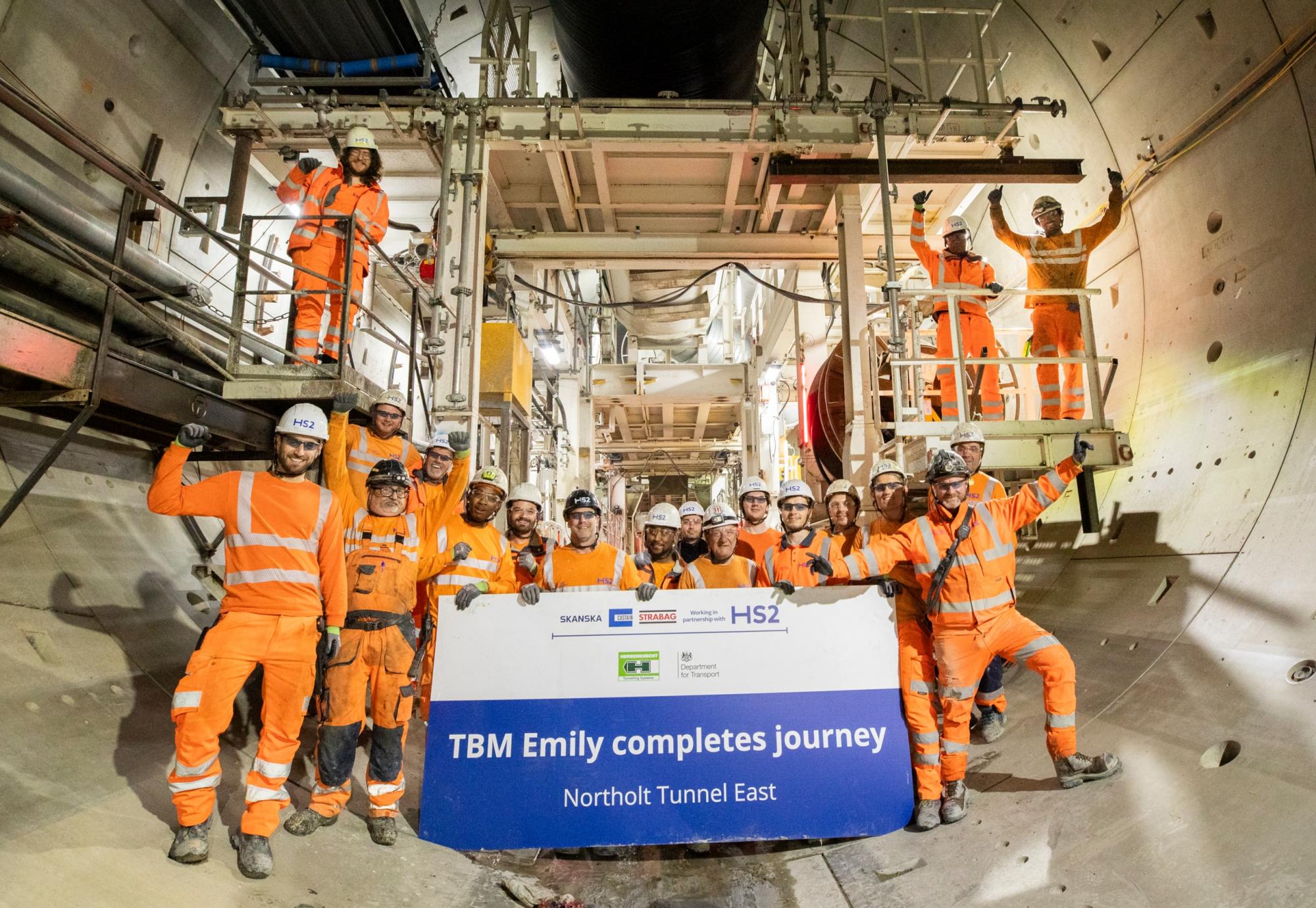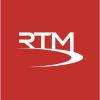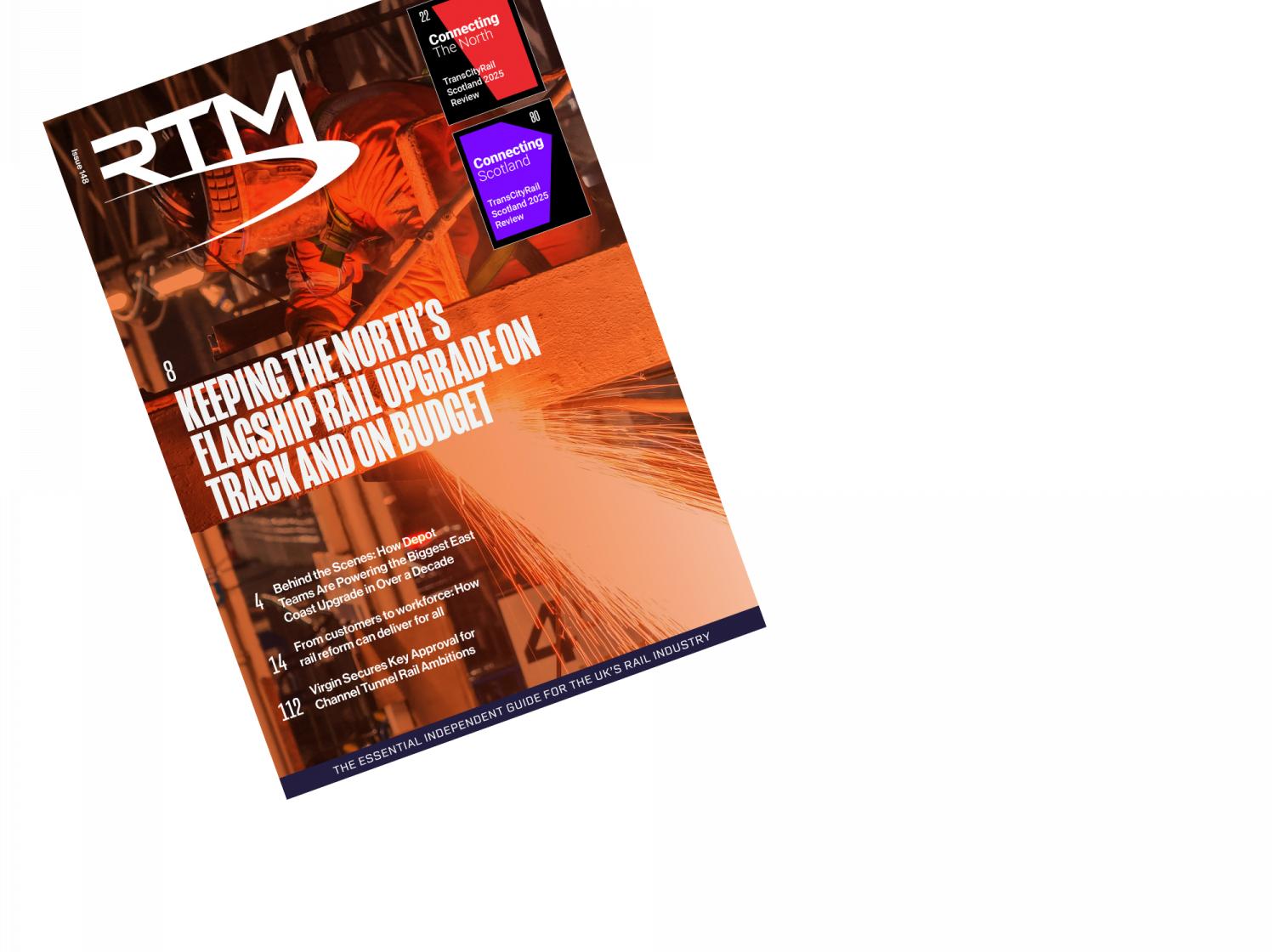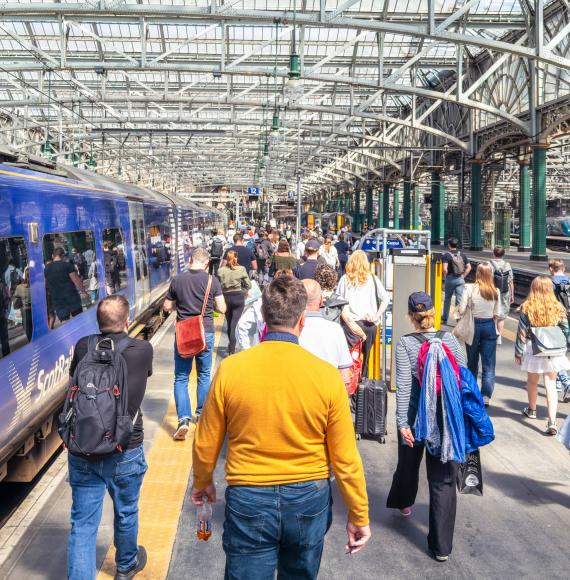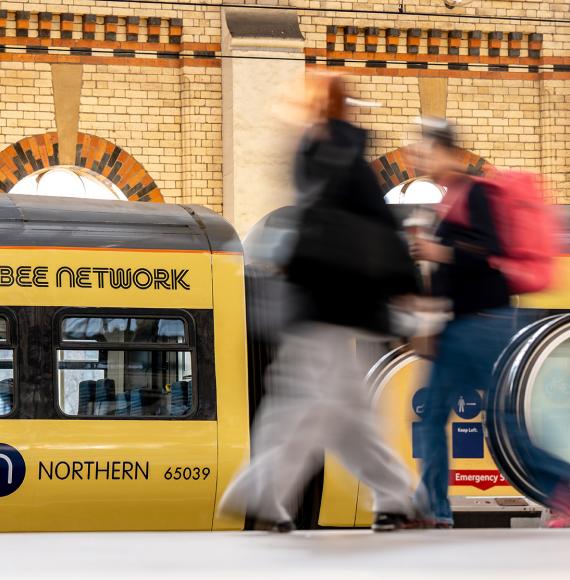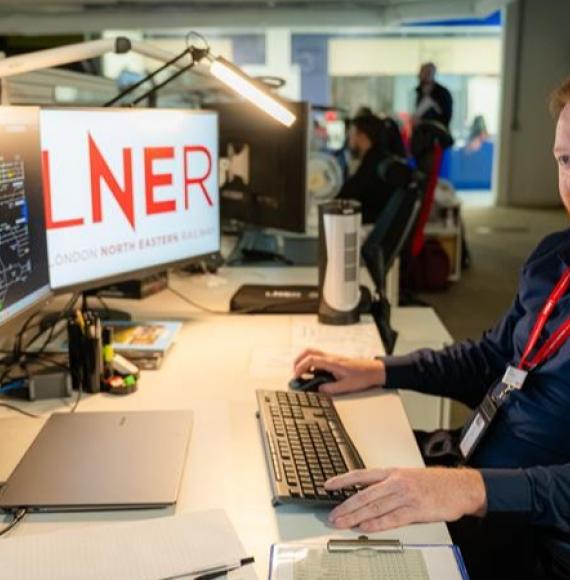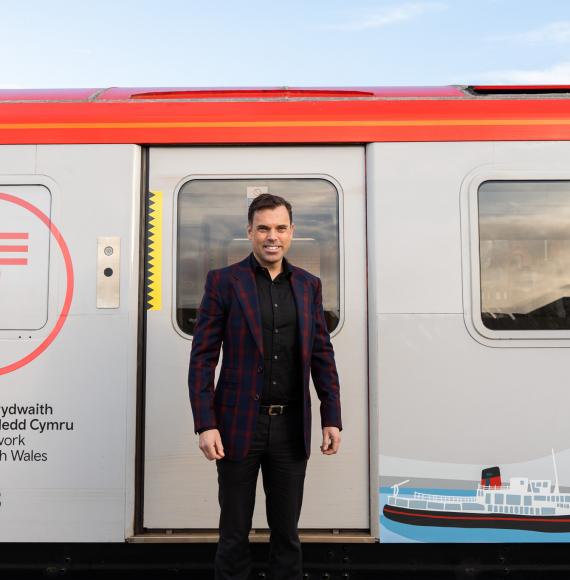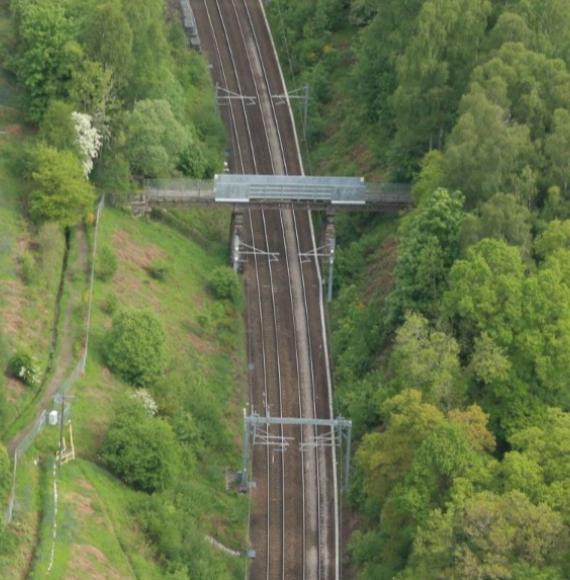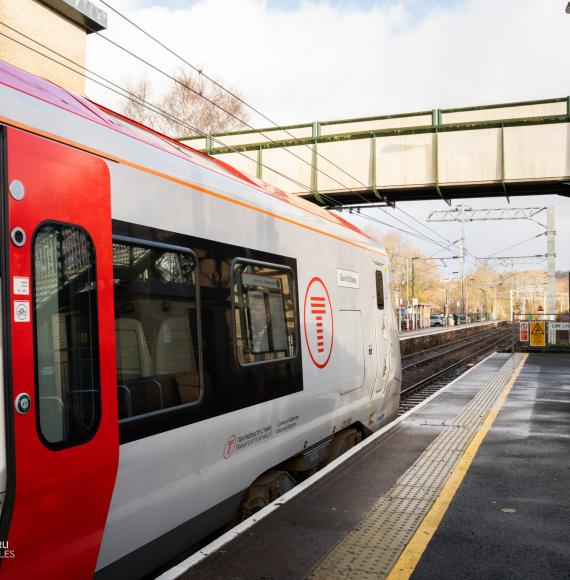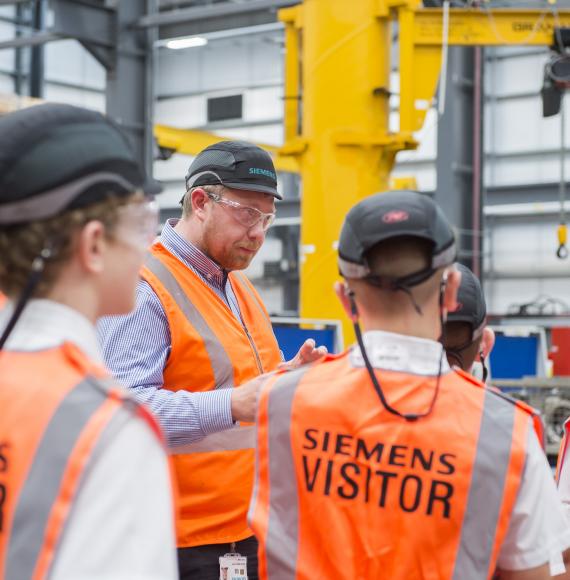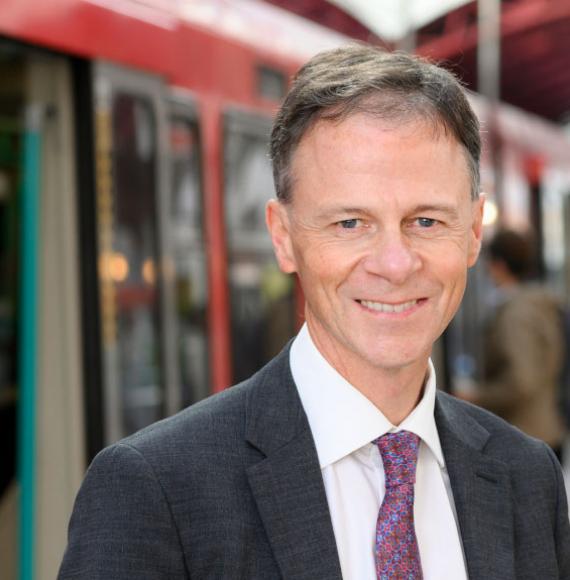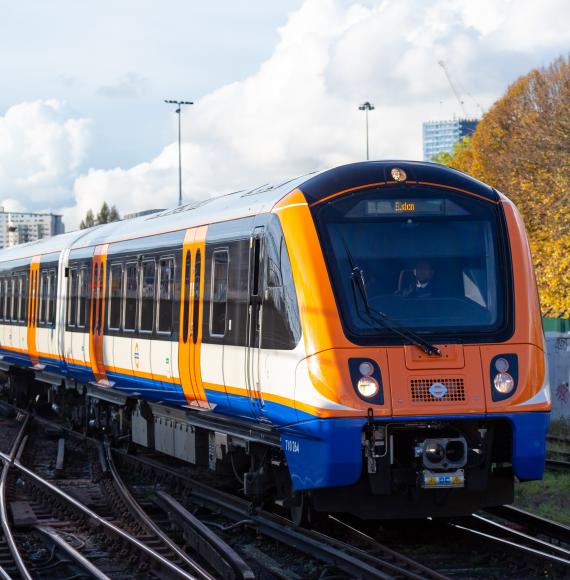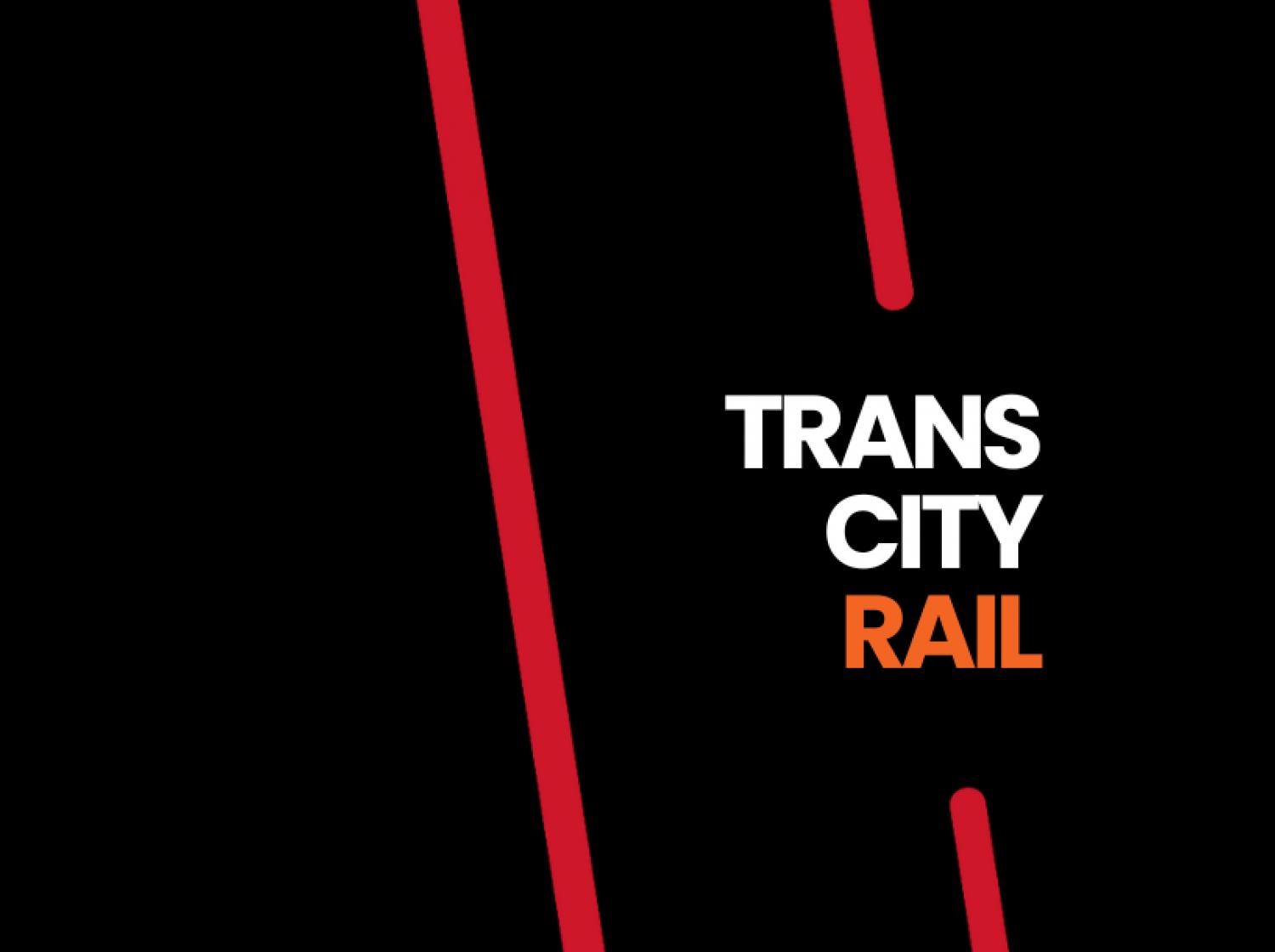HS2’s tunnelling operations in London have taken a major step forward as the third tunnel boring machine (TBM) successfully completed its journey through the capital’s Northolt Tunnel.
The TBM, named Emily, has finished a 3.4-mile drive, emerging at Green Park Way in Greenford, west London. This marks the third of four machines to complete its section of the tunnel. Launched in February 2024, Emily has excavated a single bore of the eastern section, removed an impressive 775,000 tonnes of London Clay and installed 17,514 concrete tunnel segments along the way.
In line with tunnelling tradition, the machine was named after a notable woman, Emily Sophia Taylor, who played a key role in founding the Perivale Maternity Hospital in 1937 and later became Ealing’s first female mayor in 1938.
The 8.4-mile Northolt Tunnel is being constructed using four TBMs in total: two launched from West Ruislip for the western section, and two from Victoria Road in North Acton for the eastern section. All four machines are set to converge at Green Park Way, where they will be extracted from an underground shaft. The final TBM is expected to complete its drive by the end of this year.
Once completed, the twin-bore tunnel will carry HS2’s high-speed trains between the outskirts of London and the new Old Oak Common super-hub station in west London.
Due to the high-water pressure at the Green Park Way site, the TBMs are concluding their drives in a specially designed reception chamber within the shaft. This technique allows the machines to maintain pressure while sealant is applied to the tunnel lining, preventing water ingress. Once sealed, the TBMs are depressurised and safely removed.
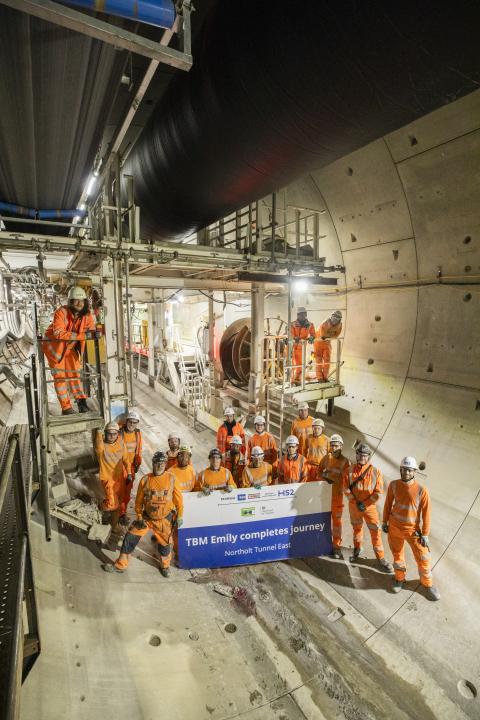
Malcolm Codling, Project Client Director for HS2 Ltd, said:
“HS2’s tunnelling drives in London for the Northolt Tunnel are nearing completion and it is a real achievement for our team to complete this 3.4-mile section on the tunnel safely and with such efficiency.
“There is still much more to do in the tunnel to get it HS2 ready and we will be focusing on productivity to continue with our work safely to get the HS2 route in London ready for track to be laid, and systems installed.”
Built by world-renowned tunnelling specialists Herrenknecht in Germany, TBM Emily is a 1,700-tonne earth pressure balance machine with a 9.11-metre diameter cutterhead. Specifically engineered to handle the soft London Clay, Emily played a crucial role in the HS2 project’s London tunnels.
Operated by three rotating teams of 48 workers, the machine ran continuously to excavate the tunnel. The work was carried out by HS2’s London Tunnels contractor, Skanska Costain STRABAG Joint Venture (SCS JV).
At peak performance, TBM Emily advanced approximately 38 metres per day. As it bored through the earth, clay was removed via a conveyor system. At the same time, the tunnel was simultaneously reinforced with concrete segments, each weighing up to 7 tonnes and manufactured by STRABAG in Hartlepool.
The excavated London Clay was transported from the Victoria Road Crossover Box near Old Oak Common station to the London Logistics Hub at Willesden Euro Terminal. From there, it was moved by rail for reuse at sites in Cambridgeshire, Kent, and Warwickshire.
Emily is the second TBM in London to complete its journey in 2025, following TBM Mary Ann’s breakthrough in Birmingham earlier this year. Emily broke through on Friday, 6th June. Meanwhile, TBM Anne—the fourth machine working on the Northolt Tunnel—is expected to complete its work later this summer.
Two other TBMs, Sushila and Caroline, completed the western section of the tunnel from West Ruislip, breaking through in December 2024 and April 2025, respectively.
This marks a significant year for HS2 tunnelling progress, with multiple breakthroughs highlighting the project's momentum.
Dave Hannon, Project Director, Tunnels & Routeway, Skanska Costain STRABAG JV said:
“The arrival of TBM Emily at Green Park Way marks a significant milestone in the programme. We are now approaching completion of the Northolt Tunnel - an exciting achievement and a testament to the collaboration, dedication, and technical capabilities of our teams.
“With our continued focus, we are pressing ahead at pace to complete the remaining works, including cross passages, tunnel walkways, ventilation shafts, headhouses, and portals, as we deliver on part of the HS2 project.”
Once the main tunnel structure is complete, the SCS JV team will proceed with constructing 34 cross passages that connect the two parallel tunnel bores. These passages are essential for safety and operational access.
The tunnel base, known as the invert, will also be completed with a flat surface to support the installation of the railway track. In addition, the construction of tunnel shafts—critical for ventilation and emergency access—will be finalized during this phase.
Image credits: HS2

